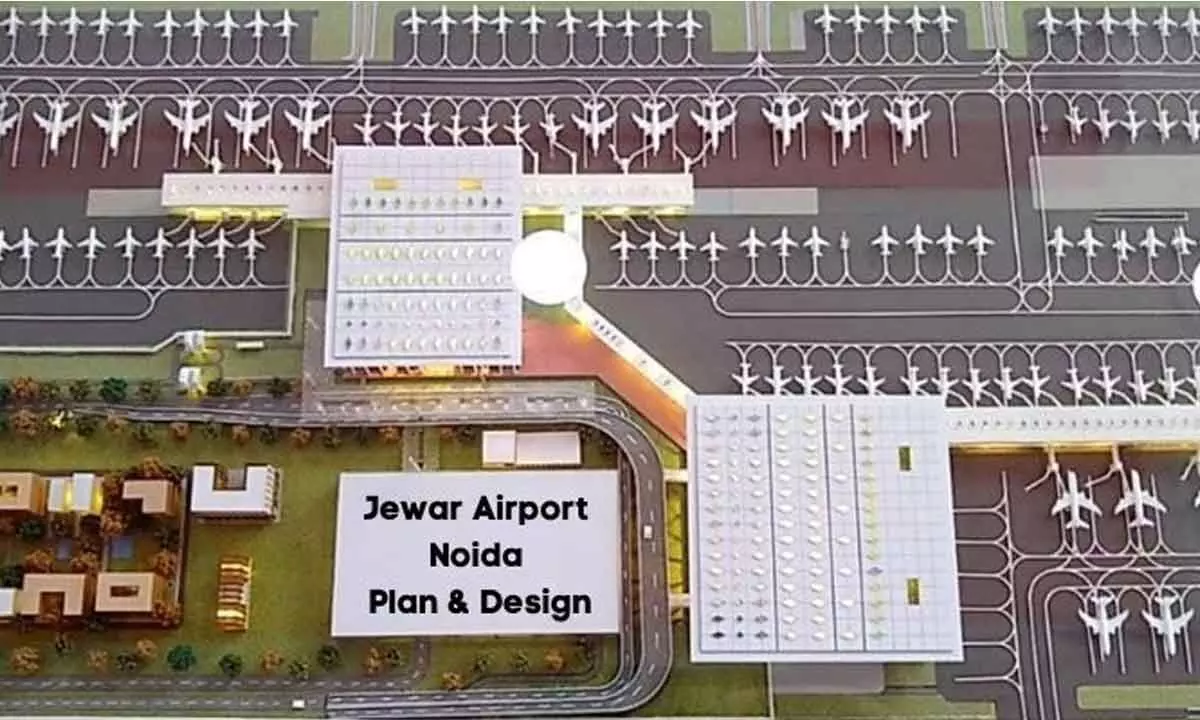Jewar, Pune and Shirdi among 21 'greenfield' airports poised to revolutionize skyways
Jewar airport aims to blend Swiss efficiency with Indian hospitality
image for illustrative purpose

The Union government's Greenfield Airports Policy, 2008, has given 'in-principle' approval for 21 Greenfield Airports across the country. As of now, 12 of these airports, including Durgapur, Shirdi, Sindhudurg, Pakyong, Kannur, Kalaburagi, Oravakal, Kushinagar, Itanagar, Mopa, Shivamogga, and Rajkot have been operationalized
The year 2024 is poised to witness the inauguration of several groundbreaking mega infrastructure projects, ushering in transformative changes in the urban infrastructure around the country.
One of the flagship projects is the Noida International Airport or Jewar airport, scheduled to be operational by the fourth quarter of 2024.
Spearheaded by Yamuna International Airport Pvt Ltd, a subsidiary of Zurich Airport International AG, the airport will serve 12 million passengers annually in Phase 1, rising to an impressive 70 million passenger capacity by the end of Phase 4.
The airport located in Jewar, a suburb of Greater Noida, aims to blend Swiss efficiency with Indian hospitality, ensuring a quick turnaround and low operational costs.
The masterplan outlines the development of two runways, two terminals, and a cargo handling capacity of up to 2 million tons in Phase 4.
The first phase's development is estimated to cost Rs. 5,700 crore, with a concession period of 40 years. Upon completion, the Noida International Airport is poised to become the largest airport in Asia.
Another noteworthy project is the Purandar Airport in Pune, officially known as Chhatrapati Sambhaje Raje International Airport. Located approximately 45 km from Pune, this Rs. 6,000 crore project is set to commence operations in February 2024, alleviating the traffic load on Lohegaon Airport.
The Navi Mumbai International Airport, currently under development by Adani Airports Holdings Ltd, is expected to address the capacity constraints in the Mumbai Metropolitan Region.
With a Phase 1 capacity of 20 million passengers annually, the airport aims to reach a total capacity of 60 million passengers and 800,000 tonnes of cargo handling per annum. The total project cost is estimated at Rs. 17,000 crore.
Highlighting the broader context, the Union government's Greenfield Airports Policy, 2008, has given 'in-principle' approval for 21 Greenfield Airports across the country.
As of now, 12 of these airports, including Durgapur, Shirdi, Sindhudurg, Pakyong, Kannur, Kalaburagi, Oravakal, Kushinagar, Itanagar, Mopa, Shivamogga, and Rajkot have been operationalized.
Under the National Infrastructure Pipeline, a total expenditure of over Rs. 91,000 crore is anticipated between FY 2019-20 to FY 2024-25.
The Airports Authority of India (AAI) is expected to incur a cost of around Rs. 25,000 crore, with the remaining expenses being borne by airport developers under the Public-Private Partnership (PPP) model.
As of November 2023, approximately Rs. 65,000 crore has already been spent, with Rs. 11,000 crore earmarked for FY 2023-24.
The Ministry of Civil Aviation has also urged operational airports and upcoming Greenfield projects to strive for Carbon Neutrality & Net Zero, encouraging the use of green energy. Presently, 66 airports across the country operate with 100 per cent green energy, aligning with the broader sustainability goals.

